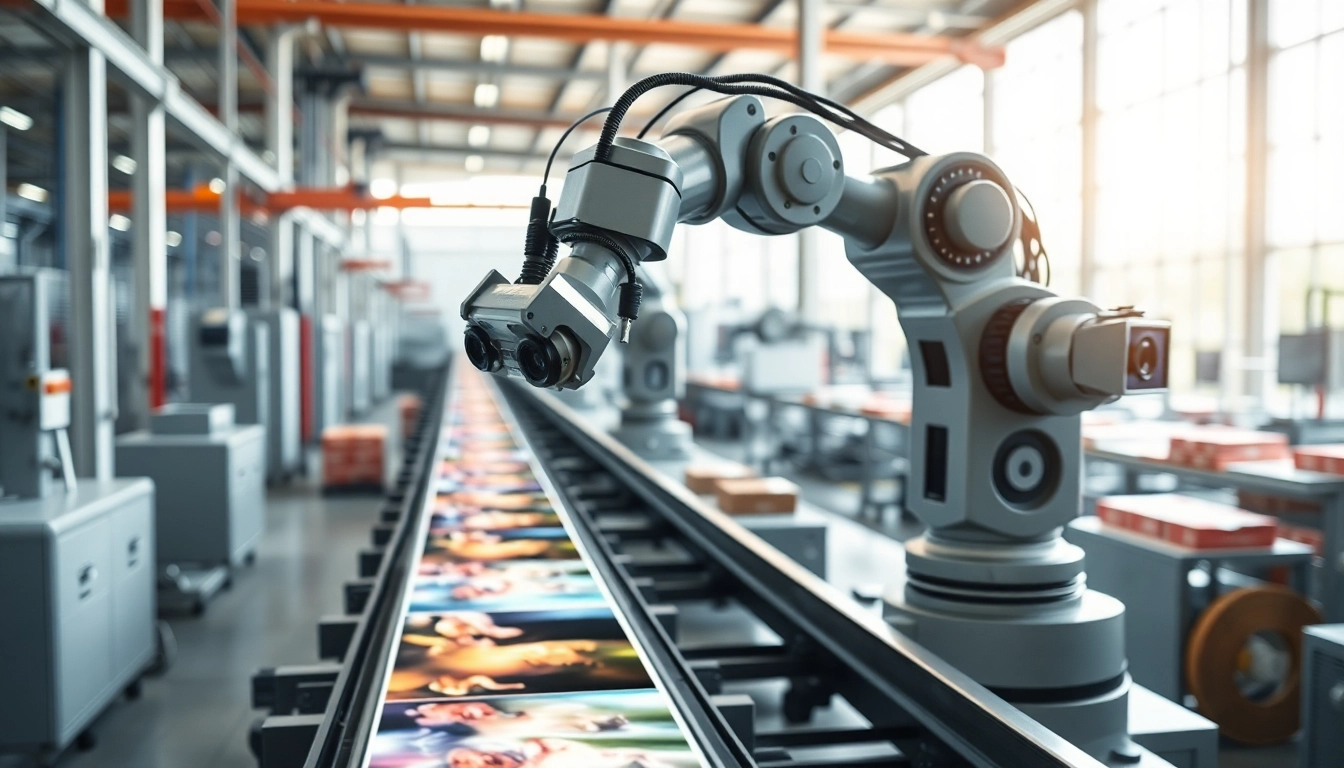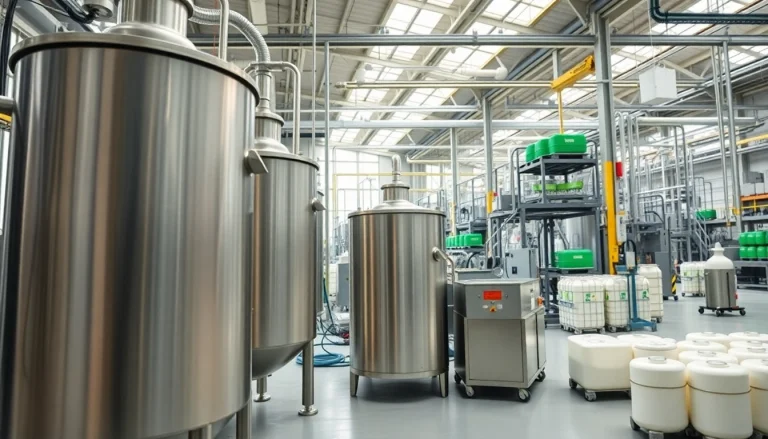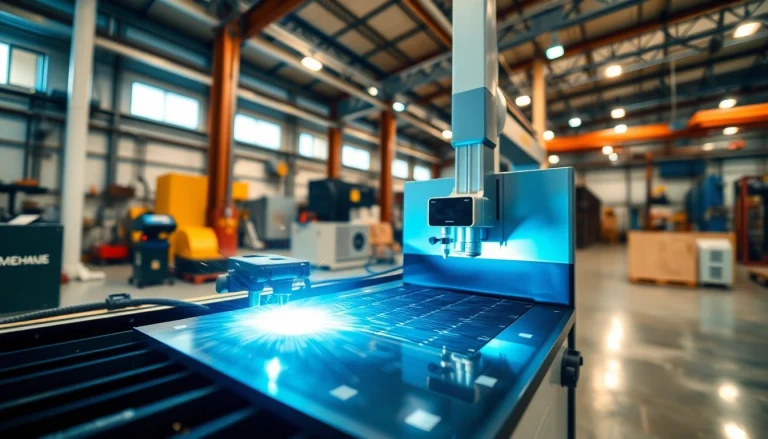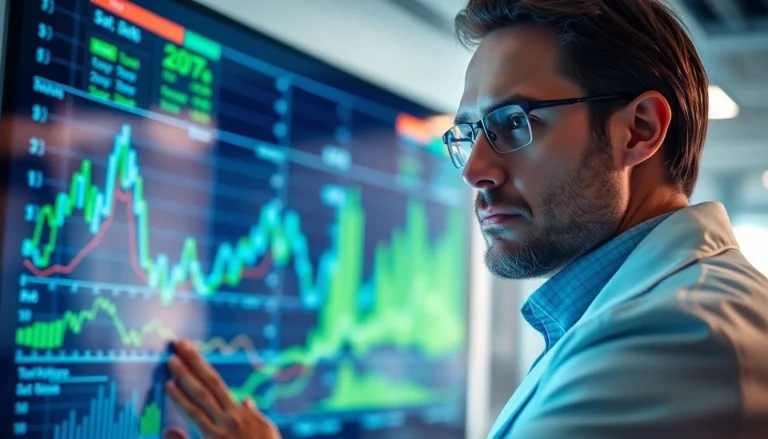What is Machine Vision?
Definition and Core Principles
Machine vision is a critical technology that enables machines and computers to interpret visual information from the world around them. It involves capturing images through cameras and processing these images with the help of digital algorithms and software. The key to machine vision is its ability to automatically inspect and analyze images for various applications, such as quality control in manufacturing, guidance in robotic systems, and even safety monitoring. Essentially, machine vision is the technology that empowers systems to “see” and make decisions based on visual data.
How Machine Vision Works
The operation of machine vision systems can be broken down into a few key steps:
- Image Acquisition: Cameras capture visual information using various lighting methods to enhance contrast and feature visibility.
- Image Processing: The captured images are processed using algorithms to extract relevant data. This may involve filtering, edge detection, and object recognition.
- Analysis and Interpretation: The processed images are analyzed to identify patterns, defects, or specific features. This involves making decisions based on predefined criteria.
- Action Execution: The machine vision system may then trigger actions, such as stopping a production line, alerting operators, or guiding robots in assembly operations.
Applications Across Industries
Machine vision finds applications in a myriad of industries due to its capabilities:
- Manufacturing: Quality control and defect detection are essential in automotive and electronics manufacturing.
- Food and Beverage: Automated inspection for packaging integrity and product quality ensures safety and compliance with regulations.
- Pharmaceuticals: Machine vision monitors drug packaging and verifies label accuracy, which is critical for patient safety.
- Logistics: In warehouse automation, machine vision facilitates barcode scanning and package sorting, streamlining operations.
- Healthcare: Medical imaging applications utilize machine vision for diagnostics and surgical assistance, aiding in enhanced patient care.
Key Technologies Behind Machine Vision
Camera Systems and Sensors
The backbone of any machine vision system lies in its camera technology. Various types of cameras are used, such as:
- Point-and-Shoot Cameras: Basic cameras used for simple image acquisition tasks.
- Line Scan Cameras: Designed for high-speed applications, these capture data in a linear array, making them ideal for continuous materials like rolls of fabric or sheets of metal.
- 2D and 3D Cameras: These provide depth information allowing systems to accurately model objects, critical in areas such as robotics and warehouse automation.
Sensors also play a crucial role in determining image resolution and quality. The choice of lens and sensor type will directly affect the accuracy of image acquisition and processing.
Software Algorithms in Machine Vision
The processing of images is facilitated by sophisticated software algorithms. Key algorithms used in machine vision include:
- Machine Learning Algorithms: These enable systems to learn from data, facilitating improved image recognition over time.
- Pattern Recognition: Algorithms that detect specific shapes or patterns crucial in defect inspection.
- Optical Character Recognition (OCR): This technology is used for reading text from images, essential in document verification and product scanning.
Continuous advancements in machine learning and artificial intelligence are driving further improvements in these algorithms, enhancing system performance and accuracy.
Integration with Robotics
Machine vision systems are often integrated with robotic systems to automate tasks that require precision and efficiency. This integration allows for:
- Guided Assembly: Robots can assemble components with high accuracy, using visual feedback to adjust their movements in real time.
- Safety Monitoring: Vision systems can monitor robotic operations to ensure safety protocols are followed, reducing workplace accidents.
- Automated Quality Checks: Robots equipped with vision systems are able to assess product quality inline during manufacturing processes.
Advantages of Using Machine Vision
Improved Accuracy in Production
One of the foremost advantages of machine vision is its ability to enhance accuracy in production processes. Automated vision systems are less likely to make errors compared to human operators, especially in repetitive tasks. The capabilities of machine vision to detect minute defects ensure higher quality products and reduce the risk of defects reaching the consumer.
Cost Efficiency and Speed
Implementing machine vision technologies often leads to significant cost savings for businesses. By reducing the need for manual inspections, companies can save on labor costs while increasing throughput. Additionally, machine vision systems process data at speeds unattainable by humans, which results in enhanced operational efficiency. This combination of speed and reduced costs provides a strong competitive advantage in the market.
Quality Control and Consistency
Machine vision systems provide consistent oversight throughout production runs, maintaining quality standards. Systems can scan products at high speeds while adhering to predefined quality metrics. This consistent monitoring allows for immediate adjustments to be made, effectively preventing the production of defective products and ensuring that consumer expectations are met.
Common Challenges in Machine Vision Implementation
Lighting and Environmental Factors
One of the significant challenges faced when implementing machine vision systems is the variability of lighting conditions. Inconsistent lighting can significantly affect image quality and processing accuracy. Proper lighting setups, including controlled illumination systems, are essential for consistent results. This includes the use of LED lights, diffusers, and filters tailored to the specific requirements of the application.
Calibration and Maintenance
Machine vision systems require regular calibration and maintenance to ensure optimal performance. Over time, camera alignment can be disrupted, images may become less clear, and software configurations might need adjustments. Establishing standard operating procedures for routine maintenance and checks can mitigate performance issues. Additionally, investing in training for personnel can ensure systems are appropriately managed.
Cost and Complexity of Systems
The initial investment for machine vision technology can be significant, and the complexity of systems may deter some businesses from adopting these technologies. However, it is essential to approach machine vision as a long-term investment. Costs can be offset through improved productivity, reduced labor expenses, and enhanced product quality. Additionally, consulting with experts during the planning stages can help streamline system integration, making it more manageable.
The Future of Machine Vision Technology
Trends and Innovations
The landscape of machine vision is rapidly evolving, with trends pushing the boundaries of current capabilities. Notably, advancements in AI and machine learning are at the forefront, allowing systems to learn from experience and adapt their operations. Emerging technologies such as edge computing and cloud-based processing solutions are also being integrated into machine vision systems, enhancing flexibility and processing power.
Machine Vision in Artificial Intelligence
AI continues to play a vital role in the future of machine vision, improving capabilities such as predictive maintenance and advanced analytics. By combining AI with machine vision, systems can not only inspect products but also predict potential failures, leading to proactive maintenance strategies that can avert costly downtimes. This integration significantly enhances decision-making processes across multiple sectors.
Impact on Various Sectors
The implications of advancements in machine vision technology span across different sectors. From healthcare applications such as diagnostics and surgical assistance to manufacturing operations aiming for greater efficiency and quality control, the influence of machine vision will only grow. As businesses continue to leverage machine vision technology, they gain insights beyond traditional metrics, utilizing data-driven analyses that help shape future strategies.








